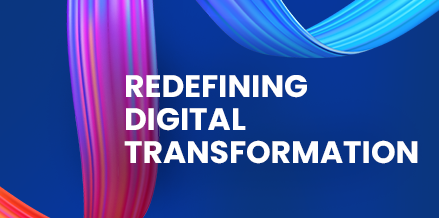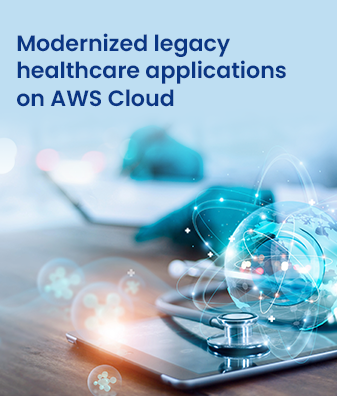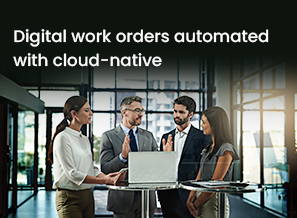About this
Project
About this project
A pioneering maritime technology leader committed to innovation, the client’s digital platform is instrumental in enhancing voyage monitoring, fleet management, and operational decision-making across the world’s shipping industry. They aimed to unify operations and deliver a secure, agile platform that enhances operational efficiency and supports dynamic fleet management across global waters.
Scope
Cloud, Product EngineeringRegion
United KingdomAbout
Client
About the client
Our client—a leading maritime technology company providing cost-effective voyage monitoring solutions to over 13,000 ships globally—sought a transformative digital upgrade to consolidate and modernize its maritime applications.

Our
Offering
Solution Overview
Successive Digital initiated a structured transformation to address legacy system fragmentation and operational inefficiencies. After an extensive evaluation of existing workflows and system bottlenecks, the project team created a clear roadmap that focused on a cloud-first strategy and robust automation using a comprehensive DevOps framework. This approach not only ensured seamless data flow and real-time analytics but also bolstered security and compliance, setting a new benchmark in maritime digital excellence.
DevOps Implementation
A robust DevOps strategy was implemented to automate software deployment cycles to meet the go-to-market strategy while improving system reliability:
- Infrastructure as Code (IaC):
- To automate infrastructure provisioning and gain full control over remote resources, we leveraged Terraform. This approach allowed us to define infrastructure as code, ensuring consistency, repeatability, and version control. By using Terraform, we significantly reduced deployment times, minimized manual errors, and streamlined infrastructure management, making scaling and modifications more efficient.
- Containerization & Orchestration:
- We adopted Elastic Kubernetes Service (EKS) to containerize and manage applications efficiently. By leveraging Kubernetes, we ensured high availability, scalability, and resilience in our deployments. The use of Kubernetes simplified workload distribution, automated container orchestration, and optimized resource utilization across different environments.
- CI/CD Pipelines:
- We implemented an automated Continuous Integration and Continuous Deployment (CI/CD) pipeline to streamline the software release process. Using Jenkins deployed on EC2, we automated build, testing, and deployment workflows, ensuring rapid and reliable application updates. The container images were securely stored and managed in Elastic Container Registry (ECR), enabling seamless versioning and deployment of containerized applications.
- Monitoring:
- For proactive monitoring and observability, we integrated Amazon CloudWatch to continuously track infrastructure and application performance. This helped us detect anomalies, analyze logs, and resolve issues promptly. Additionally, we deployed Grafana and Prometheus for in-depth monitoring at the EKS level, providing real-time metrics, dashboards, and alerting mechanisms to enhance visibility and performance tracking.
Enhanced Security & Compliance
Meeting maritime regulatory standards and protecting critical data were top priorities. Advanced security measures were integrated across the platform:
- Encryption & Secure Access:
- We used AWS Key Management Service (KMS) that managed encryption keys for robust data protection.
- AWS Certificate Manager and Route 53 were used to provide secure domain management and SSL certifications.
- Access Control & Kubernetes Security:
- Role-Based Access Control (RBAC) was implemented within Amazon EKS to ensure granular permissions.
- Kubernetes Secrets were used to manage sensitive applications securely within the EKS environment.
- Compliance-Driven Disaster Recovery:
- AWS Backup and Velero facilitated secure backups and regulatory compliance.
- Velero was implemented in EKS to back up configurations and persistent volume claims (PVCs), ensuring enhanced data recovery capabilities for the applications.
Mobile Application Development for On-the-Go Access
To meet the demand for mobile accessibility among fleet operators, we also developed a cross-platform mobile application:
- Technology Stack:
- Our team used React Native, TypeScript, and Vue.js to develop a cross-platform application. The amalgamation of top technologies helped bring the desired performance for the application and that is delivering a seamless cross-platform experience.
- Key Features:
- Real-time ship tracking and performance metrics.
- Predictive maintenance alerts to preempt disruptions.
- Weather routing and fuel consumption analytics for cost optimization.
This mobile solution empowered users with instantaneous access to critical data, enhancing operational efficiency and responsiveness.
Result
Providing results that exceeded the client’s expectations
By leveraging DevOps automation, cloud modernization, and mobile accessibility, Successive Digital delivered significant improvements across the client’s maritime operations:
- 50% Improvement in Operational Efficiency: Automation eliminated manual workflows and streamlined processes.
- Enhanced Security & Compliance: Advanced measures ensured adherence to industry regulations and safeguarded critical data.
- Cost Optimization: AWS-native services and automated workflows resulted in significant cost reductions.
- Scalability & High Availability: A cloud-native architecture supports millions of data points, ensuring consistent performance even under high demand.
More
Case Studies
Successive Advantage
We have the expertise to solve industry-specific problems with evolving technologies. Reach out to start a conversation.
Connect with us ➔














